Arthrogryposis Multiplex Congenita (AMC)-
Signs, Causes & Treatment
What is Arthrogryposis Multiplex Congenita?
- AMC name derived from Greek means curved or hooked joint. It is a condition in which a child is born with multiple joint (hand, feet, knee, ankle, elbow, hip, shoulder & finger) contractures, stiffness, muscular wasting & weakness in the body. Lack of joint mobility is often accompanied by fibrous ankyloses.
- It is a non-progressive condition.
- This problem occurs because of many reasons.
- This is a rare disorder, occurs in 1 out of 3000 live births.
- It equally affect male and female both
- These children will have normal speech & normal intelligence.
- As many as 150 syndromes have similar features with arthrogryposis
- Arthrogryposis is detected at birth or in utero using ultrasound
What are the Causes For AMC?
- There is no single cause of this complex problem.
- It is common belief that that disease begins in the first trimester of pregnancy.
- Several theories have given to the causes of AMC:
- One essential factor which causes this problem is foetal akinesia, in which foetal movement in the mother’s uterus decreases. If it persists for a long duration, then joint stiffness and muscle contracture develop.
- It can be related to multiple factor including genetic & environment one.
- Most of the time, causes are not clear, but in 30% of cases, you can find sporadic genetic causes.
- But the familial transmission is rare.
- Extrinsic (outside factors): Insufficient room in uterus; low amniotic fluid or abnormally shaped uterus; maternal infection, drugs, trauma etc.
- Intrinsic (within child): Neurological (problem in spinal cord or brain; Connective tissue disorders (tendons, ligaments, bones or joint lining).
Subgroup of AMC:
- Neurological diseases (brain, spine, or peripheral nerve)
- Connective tissue defects (diastrophic dysplasia),
- Muscle abnormalities (muscular dystrophies or mitochondrial abnormalities),
- Maternal diseases (diabetes mellitus, multiple sclerosis, myasthenia gravis, infection, drugs, or trauma)
- Space limitations within uterus (oligohydramnios, fibroids, uterine malformations, or multiple pregnancy),
- Intrauterine or foetal vascular compromise (impaired normal development of nerves, or anterior horn cell death)
Classification of AMC
- Amyoplasia is most common (40%) classical type.
- Second type is distal arthrogryposis syndrome
- Third type is Syndromic
Arthrogryposis Multiplex Congenita Sign & Symptoms?
The new born child will present with signs & symptoms of multiple joint deformity, contracture, dislocation etc.
Classic arthrogryposis (Amyoplasia):
- Bright eyed intelligent children, normal to above average cognition
- Sensation is usually normal
- Classic arthrogryposis is characterized by symmetric involvement of all limbs in 60–92% of patients.
- The arms & legs are often thin & atrophic, lack of flexion creases at joints
- Involved extremities are fusiform or cylindrical in shape, with thin subcutaneous tissue & absent skin creases
- Deformities are usually symmetrical & severity increases distally, with hands & feet typically most deformed
- Typically all four extremities are involved, but there are some with just upper or lower involvement.
- Shoulder Internal rotation contracture & inefficient deltoid muscle
- Elbow Extension-pronation contracture
- Wrist flexion contracture & ulnar deviation
- Hand Fingers-fixed flexion, thumb in palm
- Hip Flexed, abducted, and externally rotated
- Knee Flexion deformity
- Clubfoot
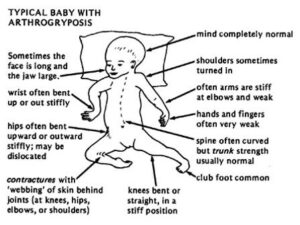
Distal arthrogryposis:
- Distal arthrogryposis syndromes are often hereditary
- Muscle weakness presents in nearly 40 % of patients
- Contractures limited mainly to distal portions of limbs, i.e. to wrists, hands, ankles & foot. Contractures of other joints are low-degree / absent altogether syndromes involve more peripheral joints (i.e.-Type I), can have more extensive hand & feet involvement.
- Uncommon problems include scoliosis, respiratory issues, facial, jaw variations & abdominal hernias.
- Mental retardation/CNS involvement is found in approximately 25 % of individuals with AMC
How to Diagnosis the AMC?
- There is no prenatal diagnostic tool to test for this condition.
- During a routine ultrasound, abnormal limbs may be noted, but no definitive cause can be ascertained until further tests can be run.
- A full history & general exam of clinical findings are mainstay of diagnosis.
- Photography to document extent of deformities to assess progress during treatment.
- Diagnosis of Arthrogryposis Multiplex Congenita is made by clinical examination by a paediatric orthopaedic surgeon or paediatrician after birth
- Genetic analysis can help only in identifying the cause of this problem.
How AMC is treated?
- Most arthrogryposis congenital children will have normal speech and a good IQ.
- There is no absolute cure for this problem.
- The different methodologies of treatment can improve the quality of life.
- Prognosis depends upon the severity of the problem and area of involvement.
Treatment modalities:
Physical & occupational therapy:
- With the help of physical and occupational therapy joint mobility, power and balance can be improved.
- It may be required for a longer duration.
- The child may need some orthopedic intervention intermittently.
- Stretching & joint mobilization exercise should be very gentle but this should be continued for long.
- Gait training, pelvis balancing is must for getting good outcome.
- Brace is required to support the limb for standing & walking.
Orthopedic intervention:
- Most of the deformities and contractures in AMC are very rigid and stiff, so they need repeated manipulation plaster or tapping.
- These children require more number of plaster in comparison with other children with similar problem.
- Some joint deformity which is very rigid, may require surgery.
- A situations like congenital dislocation of the knee & congenital hip dislocation will require surgery.
- Club foot require manipulation and plaster application.
- Careful planning and execution of proper surgery is a must.
- After surgery, a brace and therapy for a longer duration are required. All this planning should be done by a paediatric-orthopaedic surgeon, who has sufficient experience in treating this type of problem.
Prognosis:
- Life span of affected people depends on severity of syndrome & associated malformations but is often normal.
- They have nearly normal IQ
- They can do all non-strenuous activity.
- They can read, write and lead a professional life.
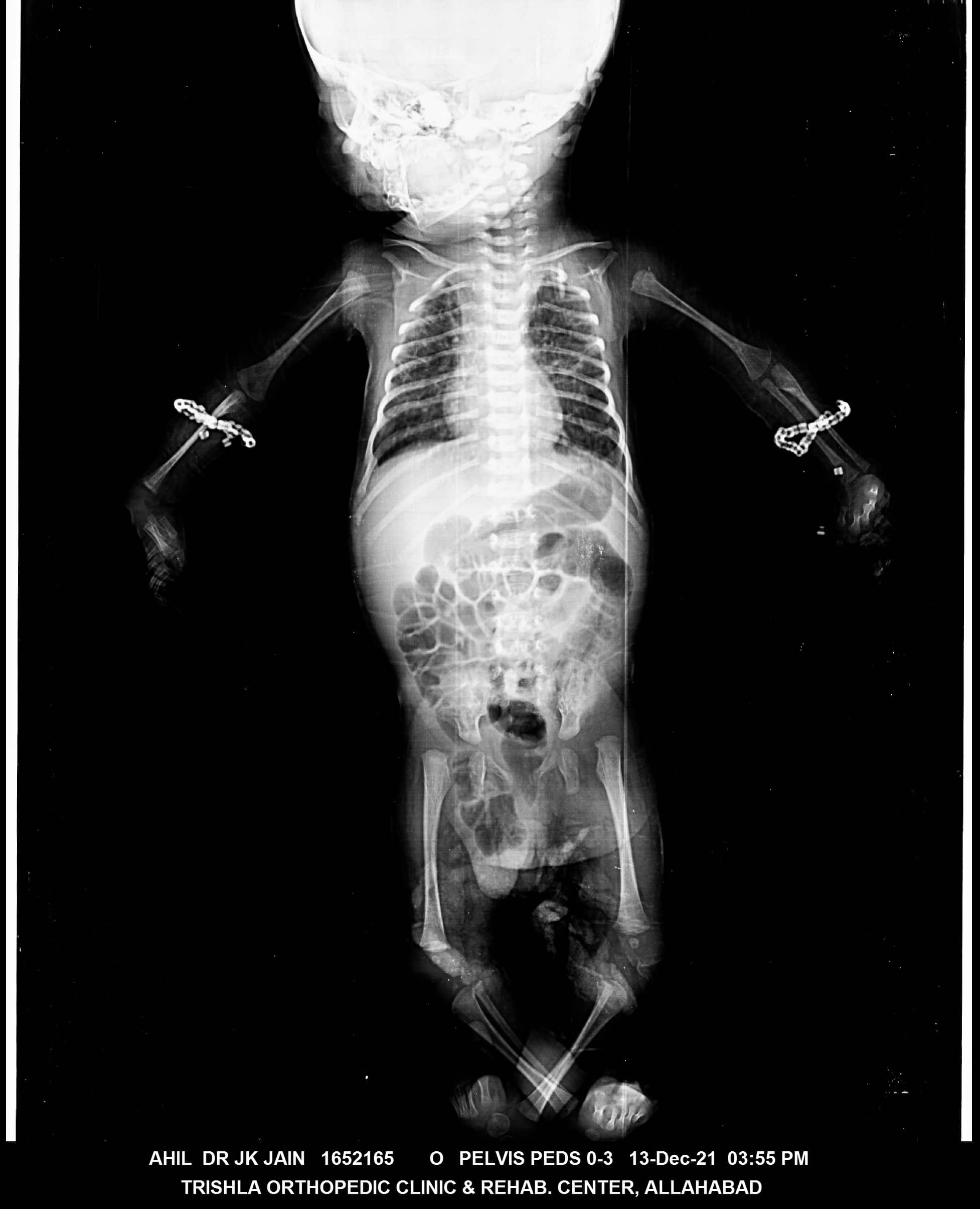
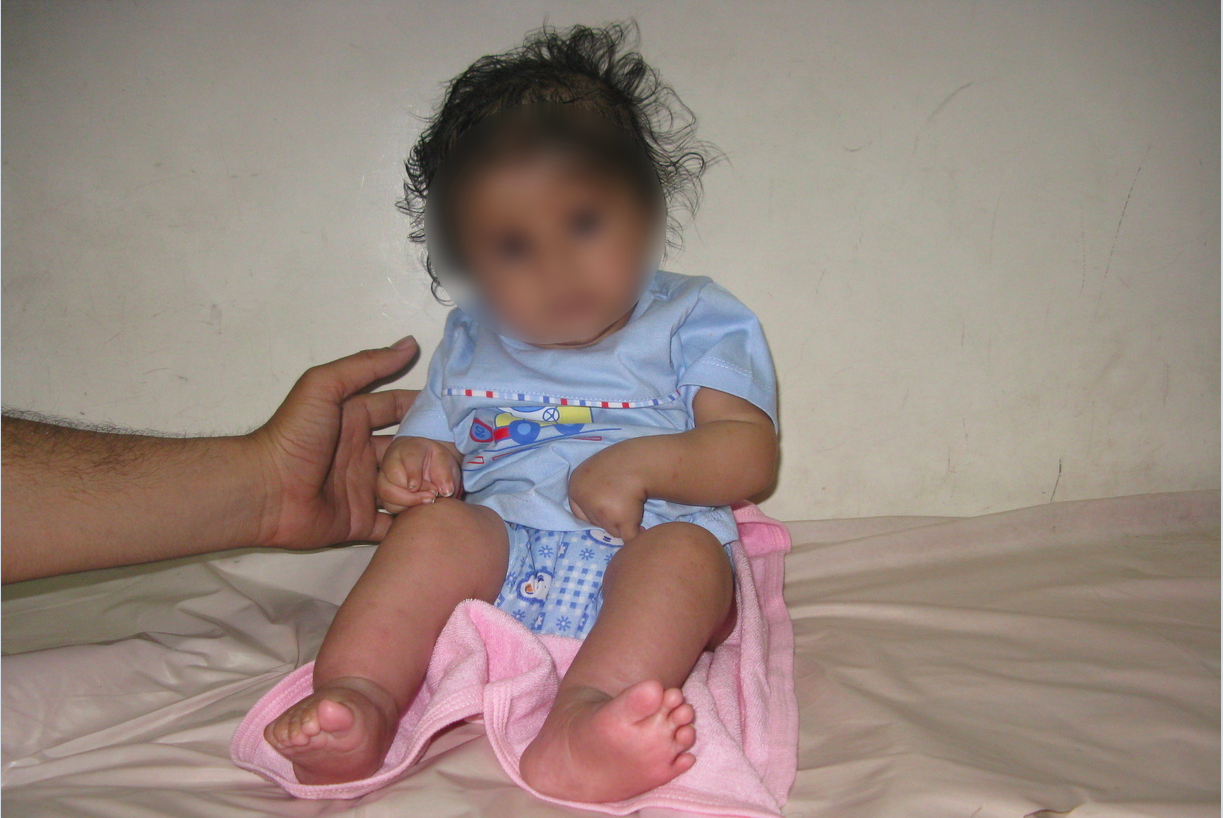
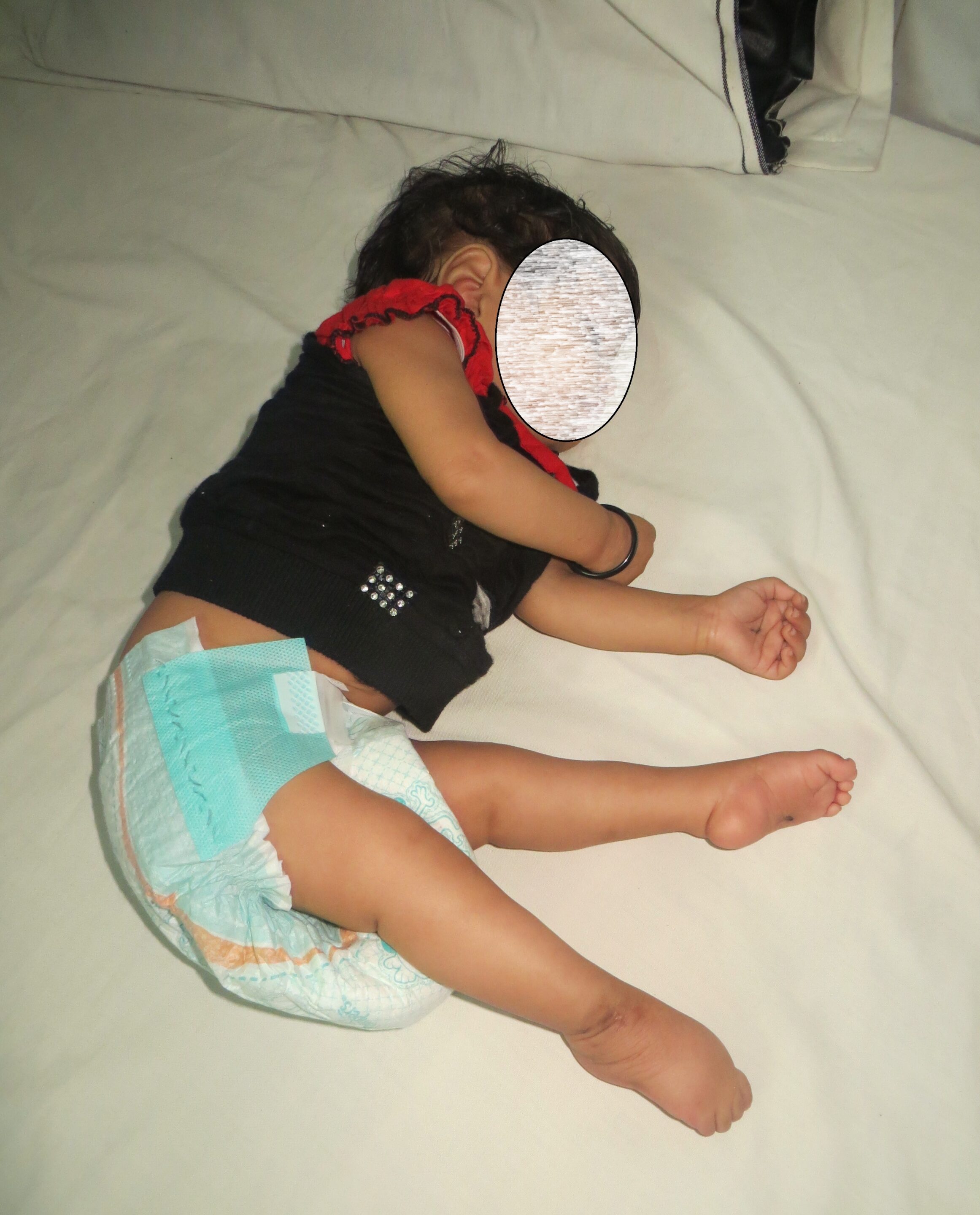
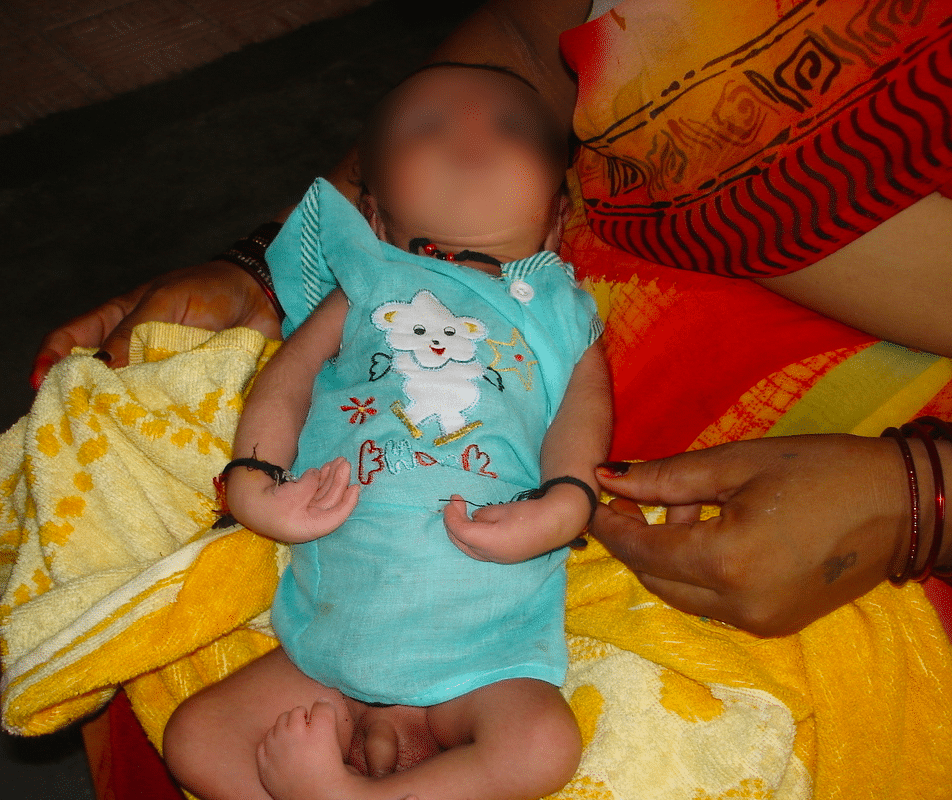
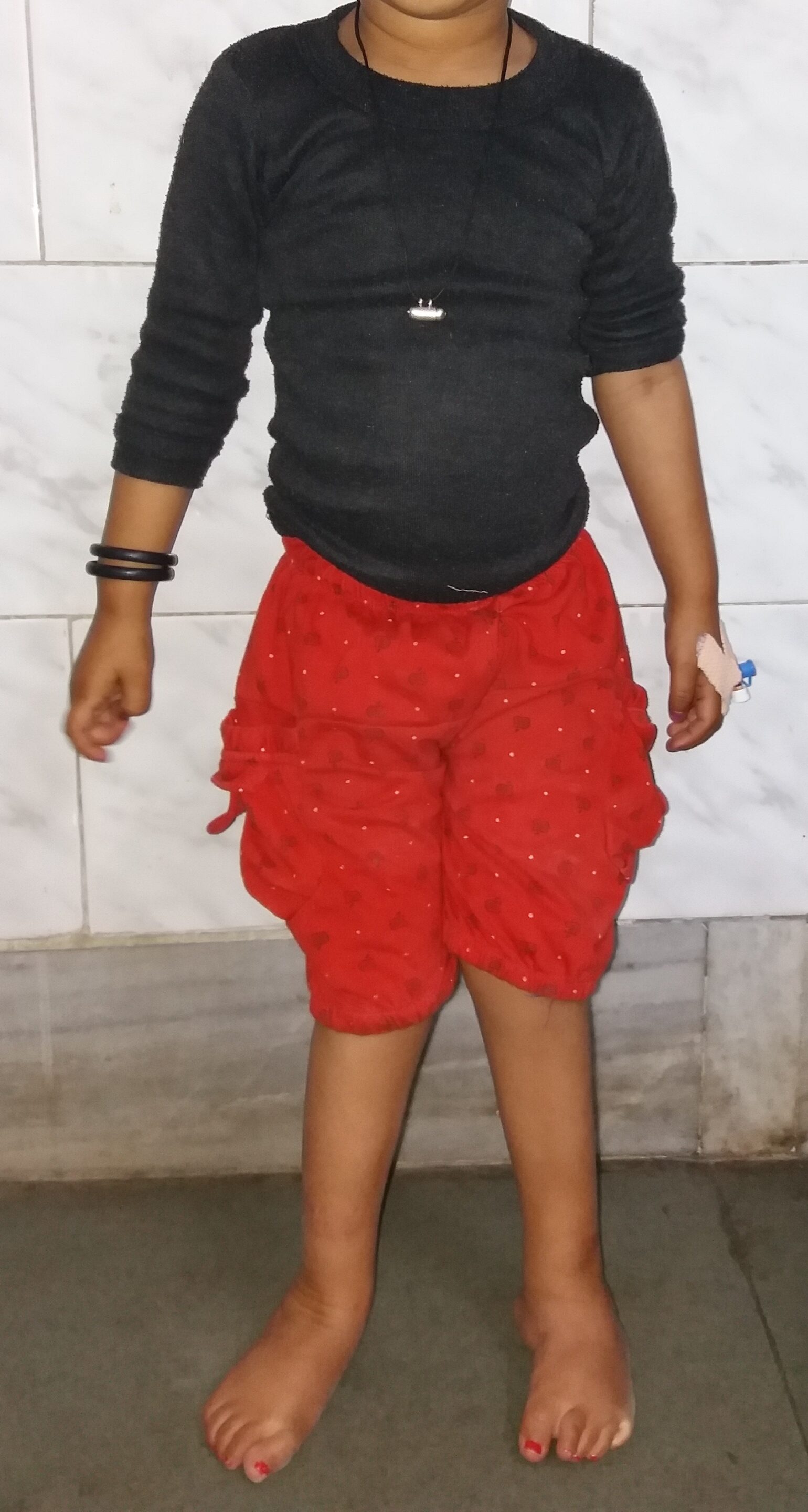
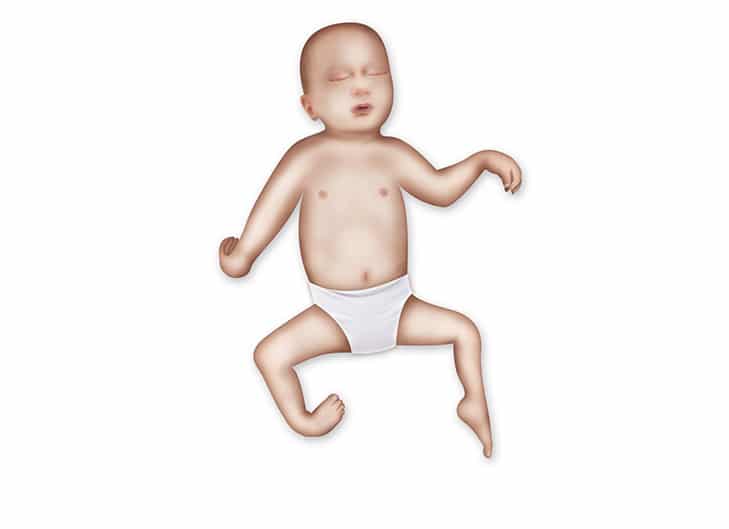
Image Source – juniortho.club
Frequently Asked Questions
How does AMC developed?
AMC involves a variety of non-progressive conditions characterized by multiple joint contractures (stiffness) and involves muscle weakness found throughout the body at birth.
Are there different types of AMC?
Common types of AMC are Amyoplasia, Distal Arthrogryposis & Syndromic Arthrogryposis.
Will my AMC child be able to live independently as an adult?
Many people with AMC despite their physical limitations, will have a positive life experience and learn to live independently. Some people may need to live with assistance even in their adult life.
Reviewed and Submitted by Dr. Jitendra Kumar Jain
Last updated on August 24, 2021
Dr.Jitendra Jain, MD and DNB (Orthopedics), president at Trishla Foundation, an NGO for treatment of cerebral palsy, and a Consultant Pediatric Orthopedic Surgeon & Cerebral Palsy Specialist at Trishla Orthopedic Clinic & Rehab Center.
Dr. J. K. Jain is a member of the general council at Dr. SMN university of rehabilitation, Lucknow, a member of the advisory board chief commissioner for PWD, Govt. of India (New Delhi), a member of the state disability research committee (U.P.), and a member of the committee of RCI, New Delhi. He has been awarded many awards, including the Dr.Bhagawan das memorial award, the spirit of humanity award, and the state govt. award for his services towards PWD, etc. Times of India has posted his work many times and mentioned him as one of the best doctors in the field of Pediatric Orthopedics. He helped many children recovering from cerebral palsy, just like comedian jay Chanikara, who is now able to stand and walk without any support, Abena, a Ghana girl with cerebral palsy, and many more. He also organized the National Wheelchair cricket tournament and created World’s first cerebral palsy village foundation in Prayagraj. He successfully treated 10,000+ children with various kinds of orthopedic disability, conducted 160+ free assessment camps, and produced a documentary film on cerebral palsy.
Walk in Appointments Available Daily
You can make an appointment online for video tale-consultation by fixing up an appointment at this website or you can visit the clinic to make an appointment in person and show to doctor with the care of social distancing at the given time.
Contact us
Call Us
0532-2468989
+ 91 9415014994
+ 91 8577873545
+ 91 9455001645
Email Us
totrishlaortho@gmail.com
Our Location
Dr. Jitendra Kumar Jain
Trishla Orthopedic Clinic & Rehab center, 182C / 350A, Tagore Town, Prayagraj (Allahabad) U.P-211002, India
